
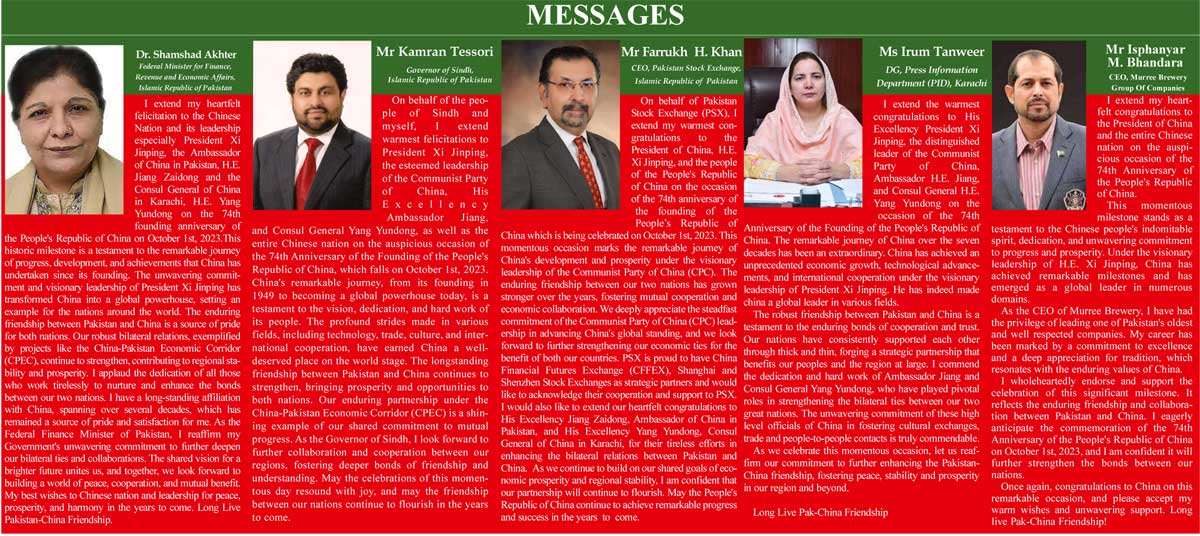
Socio-economic impact for CPEC
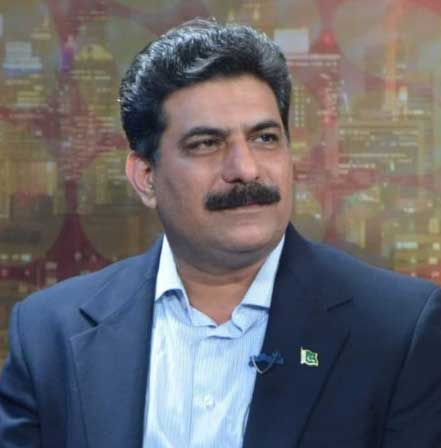
Regarding the relationship between Pakistan and China, it is traditionally said that this friendship is higher than the Himalayas and deeper than the seas, but this is also a fact, this friendship has turned into brotherhood. They are like iron brothers who cannot be broken, have gone through all kinds of trials and new avenues of cooperation are opening up. China-Pakistan Economic Corridor is a great example of this, along with development of Gwadar city, Gwadar port, construction of international airport in Gwadar, construction of colleges and hospitals, establishment of economic zones with CPEC in various cities, Sindh region. A grand example of this is the mega project to generate electricity by extracting coal from ancient coal mines in Thar. Although many strategic projects are going on between the two countries and at the same time work is being done on the installation of nuclear power plants, but the social and economic benefits of CPEC are being reflected on the society in a much better way. Chinese President Xi Jinping had said that Pakistan will make the China-Pakistan Economic Corridor a model of practical cooperation, in which our focus will be on energy, Gwadar Port, infrastructure development and industrial development. This will benefit the people of both countries and other nations of the region.
The vision of the CPEC project is to strengthen the chain of communication. The two nations should be brought closer to each other. To improve the lives of the people of both countries and the countries of the region through the promotion of industry and trade, the leadership of China announced to share its achievements with other nations and the city of Gwadar, which was a small settlement, is now an organized city. The new International Airport with Gwadar Port will change the fate of the whole area apart from this city. Economic cooperation agreements have also been signed between China and Iran. There are vast opportunities for cooperation, especially in the energy sector.
Gwadar is going to be completely transformed from 25 years ago today. The project to purify water from the sea is also very important while the project for the welfare of the fishermen community is also included. Vocational College and Hospital for Gwadar is a great example of Pak-China friendship. There will be social and economic improvement of the people of Gwadar and it will have far-reaching effects.
Just as Gwadar was a desert and completely backward region in Balochistan, Thar is considered to be the most backward region in Sindh. But with the cooperation of Engro, Sindh Province, Federation of Pakistan and China, its hidden treasures have been made usable. There are vast reserves of coal in Thar, but even after many years of Pakistan’s creation, we could not make them usable. Friendly country China signed an investment agreement here. The local population has been evacuated from the affected areas and houses with more facilities have been built for them. Many of them have been trained and given driving jobs. The coal deposits in Thar were below the depth of five hundred feet which was a huge task to extract which was successfully completed and then modern technology plants were installed, today electricity is being generated from Thar coal. About 2640 MW of electricity is being supplied to the National Grid. This project has laid the foundation for poverty alleviation in Thar which will soon turn into prosperity.
Economic zones have been planned along the China-Pakistan Economic Corridor. Major industrial projects will be set up in these economic zones. Which will provide jobs on a large scale while the domestic production will also increase and the destiny of the people of these areas will change. The China-Pakistan Economic Corridor has started the links between the two nations. Thousands of Pakistani students are studying in China’s educational institutions, Chinese language learning institutions have been established in Pakistan, which are called the Confucius Center. It is based in Karachi University. Similarly, Pakistan’s national language Urdu is being taught in 7 Chinese universities, many Chinese youth are interested in learning Urdu language. Similarly, the number of Pakistan Study Centers in China has reached 10. It is as if the history, politics, economy and culture of Pakistan are being researched in China. Pakistan China Study Center is established in Islamabad and Pakistan China Friendship Center is also a wonderful gift of the people of China to the people of Pakistan. Karachi Editors Club has formed a Special Committee on Silk Road Media Corridor to counter negative propaganda. The people of both countries continue to improve their lives through economic cooperation projects that will lead to great achievements and embark in a great era of prosperity.

China an emerging superpower
with 74 years of remarkable progress
October 1st is the founding day of the People’s Republic of China. This important occasion serves as a reminder to benchmark a nation’s progress and achievements over the years. As we reflect on China’s journey, it is worth comparing the leadership periods of Deng Xiaoping and Xi Jinping, the two influential figures and paramount leaders in China’s modern history.
As China celebrates its National Day and looks to the future, it will be interesting to see how its leaders continue to balance economic growth with political stability and social progress. Whether following in Deng’s footsteps or forging their own path, China’s leaders will undoubtedly play a crucial role in shaping the country’s future.
Since founding of the People’s Republic of China in 1949, China has made unprecedented advancements in social, economic, political, and technology fields, just to name a few. Absolute poverty elimination, embracing market-oriented economy, attracting FDI, creating massive manufacturing base, building modern infrastructure, leap frogging in technology, crusading corruption from the public & private sectors, rejuvenating the national pride and emerging as the next superpower on the global stage are just the highlights of the last 74 years remarkable achievements. Even after remarkable progress, the country has remained committed to its socialist ideals. It has made impressive strides in the field of science and technology, enabling advancements in areas such as artificial intelligence, 5G networks, and renewable energy. Through its investment strategy, China has transformed its infrastructure into marvels of technology, including high-speed railway, modern airports, and seaports.
However, it is important to note that the PRC’s progress and achievements have not come without struggles and challenges. Despite these obstacles, the PRC has managed to achieve strong and unparallel economic growth over the years. This growth has allowed the country to lift 400million people out of poverty, further boosting its development and progress.
The PRC embarked on its journey of economic growth and technological advancements with the leadership of President Deng Xiaoping who modernized Chinese economy by opening it to the foreign investments.
Deng Xiaoping was not only China’s leader from 1978 to 1992 but was also considered as the architect of the country’s economic reforms. Under his leadership, China shifted from a centrally planned economy to a market-oriented one, attracting foreign investments and lifting millions of people out of poverty. Deng also initiated the “One Country, Two Systems” policy, which allowed Hong Kong and Macau to maintain their capitalist economies while being a part of China. Deng famously declared that “to get rich is glorious,” and he also introduced the concept of “socialism with Chinese characteristics,” which allowed market-oriented reforms while maintaining the Communist Party’s political control.
China has been one of the fastest-growing major economies in the world over the past several decades, with an average growth rate of around 6-7% per year. This is significantly higher than the growth rate of the US economy, which has averaged around 2-3% per year. If China is able to maintain this level of growth over the long term, it could eventually overtake the US in terms of economic output.
China has long been known as the “world’s factory,” thanks to its huge manufacturing sector. The country is a major producer of everything from textiles and apparel to electronics and machinery. This sector has been a key driver of China’s export-oriented growth model over the past few decades, transforming China into the global powerhouse.
China has invested heavily in infrastructure in recent years, including highways, bridges, railroads, and airports. This has helped to connect different regions of the country and facilitate economic growth.
China’s real estate market has boomed in recent years, driven by rapidly rising incomes and urbanization. This has led to a surge in construction activity, particularly in major cities like Shanghai and Beijing.
In recent years, China has emerged as a major player in the global tech industry, with companies like Huawei, Alibaba, and Tencent leading the way. This sector has been a key focus of the Chinese government, which has sought to foster innovation and high-tech development.
While manufacturing and infrastructure have traditionally been key drivers of economic growth in China, the services sector has become increasingly important in recent years. This includes everything from finance and insurance to retail and hospitality.
The rising middle class in China has led to a surge in demand for consumer goods, from high-end luxury items to everyday necessities. This has created a huge market opportunity for both domestic and international brands.
China has a much larger population of over 1.4 billion people. This means that even if China’s per capita income remains lower than that of the US, its overall economic output could still surpass that of the US.
China continues to innovate and develop new technologies that plays a pivotal role in its long-term economic prospects. Some experts believe that China could become a global leader in areas like artificial intelligence, machine learning, robots, 5G networks, satellite technology, aerospace, space exploration, renewable energy, high speed rail, quantum computing, etc. which could give it a critical advantage in the global economy. Made in China 2025, aimed at expanding its global reach will transform China into a leader in cutting-edge technologies.
President Xi Jinping after assuming the PRC’s leadership in 2013, has continued to push for economic reforms and modernization. Under his leadership, China has launched ambitious initiatives such as the Belt and Road Initiative (BRI), SCO, NDB and CRA. Under Xi’s leadership, China has pursued an ambitious agenda aimed at achieving the “Chinese Dream” of national rejuvenation. This vision encompasses economic prosperity, military strength and social harmony. Xi Jinping leadership style is considered more assertive and is characterized by a strong emphasis on party discipline and ideological conformity. As a result, his anti-corruption campaign has targeted both high-ranking officials and grassroots bureaucrats.
It is clear that Deng and Xi, both leaders have played critical roles in shaping China’s trajectory over the past few decades. Deng’s economic reforms laid the foundation for China’s rise as a global economic powerhouse, while Xi’s emphasis on technological innovation and military modernization reflects China’s aspiration to build a modern socialist country in all respects.
Congratulations to Chinese leadership and its people on the 74th founding anniversary of the Republic of China!
China at 74: A remarkable journey of resilience and progress

Today on October 1, 2023, People’s Republic of China is celebrating its 74th founding anniversary, marking seven decades of remarkable progress and transformation. From a war-torn nation grappling with poverty to becoming a global economic powerhouse, China’s journey is a testament to the resilience, determination, and unwavering commitment of its people. In this article, we delve into the key milestones and achievements that have defined China’s path over the past 74 years.
The founding of the People’s Republic of China on October 1, 1949, under the leadership of Chairman Mao Zedong, marked the end of decades of civil war and foreign occupation. This momentous occasion united the nation and set the stage for radical socio-political and economic transformations.
Deng Xiaoping’s rise to power in the late 1970s brought about a significant shift in China’s trajectory. Deng initiated economic reforms and opening up policies that encouraged foreign investment and trade. The Special Economic Zones (SEZs), such as Shenzhen, became laboratories for economic experimentation and played a pivotal role in China’s economic transformation.
Over the past four decades, China has achieved unprecedented economic growth, lifting hundreds of millions of people out of poverty. The country transitioned from a primarily agrarian society to an industrial and technological powerhouse. Its GDP growth consistently outpaced global averages, making it the world’s second-largest economy.
China’s commitment to infrastructure development is evident in its extensive high-speed rail network, modern airports, and world-class ports. The Belt and Road Initiative (BRI), launched in 2013, is a testament to China’s determination to connect with the world through massive infrastructure investments, fostering trade and cooperation with countries across Asia, Africa, and Europe.
China’s technological prowess is exemplified by its achievements in space exploration, 5G technology, artificial intelligence, and quantum computing. Companies like Huawei, Alibaba, and Tencent have become global giants, contributing significantly to China’s rise as a tech superpower.
China has emerged as a global trade leader, playing a central role in the global supply chain. Its vast consumer market and exports of goods and services have made it a key player in international trade. The establishment of the Asian Infrastructure Investment Bank (AIIB) and the New Development Bank (NDB) reflects China’s growing influence in global finance.
With rapid industrialization came environmental challenges. China has recognized the need for sustainable development and has made strides in renewable energy, afforestation efforts, and pollution control. The commitment to becoming carbon neutral by 2060 signals a significant step toward addressing global climate change.
China has made substantial progress in improving living standards and access to education and healthcare for its citizens. The country’s poverty alleviation campaign, which aimed to eradicate extreme poverty, has been hailed as a remarkable achievement. It demonstrates the government’s commitment to ensuring a better quality of life for all its citizens.
China’s 74th founding anniversary is an occasion to reflect on its remarkable journey from a war-ravaged nation to a global economic and technological powerhouse. The country’s resilience, determination, and commitment to progress have been central to its success. As China continues to navigate complex global challenges, its future trajectory will undoubtedly shape the world in profound ways. Whether in terms of technological innovation, sustainable development, or international relations, the world will be watching China’s next steps with great anticipation.
China an overview – Emerging global power
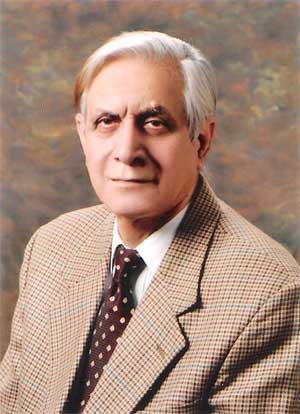
When you talk of modern China you must go back in history. A land full of magnificent treasures and culture. In the Millennium it is said that three fourths of the time Chinese economy has been the dominant economy in the world. This is a fact which can not be negated and must be kept in mind when examining the modern China in the context of present geopolitical and geostrategic context. The dynamics of President Xi domestic is policy to steer China in the modern time has its roots in the magnificent past as I mentioned above. A glory to be retained and regained.The progress of China can be divided In to two periods. From Chairman Mao Revolution to 1978, the second period starts from 1978 to date. Modernization of China commenced from 1978 onward. President Xi Policy for the development of China has two different approaches. In the realm of foreign policy China has a different worldview guided by the idea of building a global community of shared furture. The domestic affairs China has a different policy , welding together 1.4 billion population, regions and diversity into one great nation. The dynamics of governance can only be judged if you look at the complexity of the problem for such a large country and large population. President Xi’s policy is brand in the fulfillment of the Chinese dream.What is the Chinese dream? According to Zhongguo Meng , China will devote fully to achieve development by 20 50 . The Chinese people must work assiduously to revitalize the nation . President Xi put forward dream project, the foreign policy initiative, include one Belt and one Road spreading to the world connecting them through a vast network of road and rail creating a global hub. Indeed, a very gigantic project. Establishment of Asian infrastructure investment bank, global security initiative, global development initiative, global civilization initiative totally new approach in the Foreign Affairs. These initiatives indicate the approach not in regional context alone but also in the global strategic environment. Famous author Mars described and explain the concept of Chinese dream and so as Helen in her book. The first part is to develop China by 2021 has already been accomplished and even the second Aggressive approach part has reached its completion stage. In China Belt and road is the accomplishment of the dream of the old silk route. It is also linking the Central Asia with Europe and thus creating a global network of road and rail network which will bypass the sea lanes of the Indian Ocean strait of Malacca and S China Sea. The Chinese dream also envisage the development of the Chinese nation based on two fundamental principles. First the ‘integrity’ and the second ‘honesty’. It is for that reason there is zero tolerance for corruption in modern China. The implementation of this policy is criticized by the human right organizations and the west. They blame China violating human rights but the fact remains the Chinese people in the follow up of opium wars were subjected to extreme atrocities , occupation and slavery by the western powers.As part of the Chinese dream it is investing in the areas of education, technical education, and building of the infrastructure within China to connect the vast landmass into a one region. The construction of super trains up to 37,000 km connecting all the major regions is a marvelous feat. This has been the major integrating step in and instrumental in the growth of China. Connectivity is the key word for the growth. The basic principle of economic growth. The second most important area which has been part of the Chinese dream is the education both in research and scientific pursuits. The last conference of Communist Party of China, president Xi emphasized the importance of quality in the production. We find the Chinese automobile market has overtaken the Japanese and the European automobile market. The research into alternate energy in the usage of automobile helps made a success for the Chinese to move from the lithium batteries to sodium carbonate cells. China have been able to commercially produce it and finding it a success both in cost and its efficiency. It is a major breakthrough .It is going to impact both the sectors of space and communication with protection of such cheaper source of energy. The electronic automobile penetration into European market has initiated inquiries and investigations to find out if the electronic vehicles are not being subsidized and dumped into Europe. Is the major players like Mercedes ,BMW , Toyota and Nissan all are finding themselves in a major competition with the Chinese development. In space China has achieved great accomplishment by landing on the moon . Food is the most important component to sustain such a huge population. Control of population on the one side the China has been able to reduce the population growth to almost 2% they have been successful in the production of Agriculture Produce to sustain their population. The Chinese research in the agriculture has now been acknowledged World over ,to enhance the production levels of agriculture produce besides many innovations and savings in the watering of the agricultural lands. This has been a major effect in sustaining the Chinese population whereas many countries in the world are facing food shortages for obvious reasons.Naturally the Chinese spectacular growth in the economy and their development of military has caused alarm in the corridor of power in USA. Restrictions on economy beside the tensions in this affair of foreign affairs and in the maritime affairs are at the highest the Chinese growth the American feel is a direct threat to their supervision. Ironically this point has now become the election issue in the United States as well and some of the Democratic candidates publicly say that China is our enemy. However, some of the scholars, think tanks, and even Gen Milly Chairman of the joint staff has advised that America must avoid a direct war with China. Similarly, China will not like to go to war with USA which can hinder its growth for times to come. It is In the interest of both the powers to reach negotiable settlement to charge their relations. US China rivalry in any case has created pressures and geostrategic problems for the development countries for the obvious reason. The recent G20 communique clearly indicate the policy United States is going to adopt in the near future with regard to China and Russia. It is going to put maximum pressure . Between the East and the West for the obvious reasons the United States will try its level best to minimize the impact of BRI initiative as well as any effort to deal with the world’s financial system. Yet all said and done the world needs more prudence, tolerance and peace. It is the question of the human race. Pakistan is no exception.To achieve the Chinese, dream the growth of economy is the key.
A concise history of China and the transformative leadership of Xi Jinping
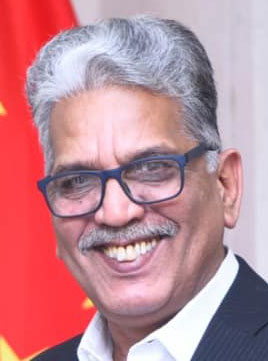
China’s rich history spans over five millennia, encompassing the Xia, Shang, and Zhou Dynasties, which laid the cornerstones for Chinese culture, governance, and philosophy. The imperial era witnessed the rise and fall of dynasties such as the Qin, Han, Tang, and Ming, each contributing significantly to the nation’s cultural, technological, and economic development. Notable inventions like the Great Wall, the Silk Road, papermaking, printing, and the compass emerged during these periods.
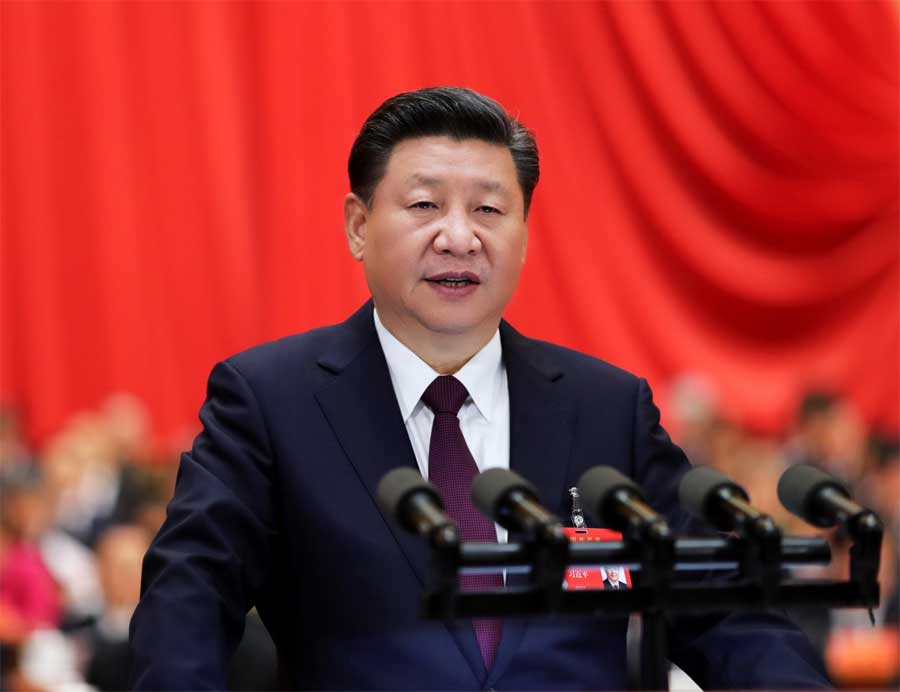
The turning point came after World War II when the Chinese Civil War concluded in 1949 with the Communist Party of China (CPC) under Mao Zedong’s leadership, leading to the establishment of the People’s Republic of China (PRC) marked the rise of Chinese People..Deng Xiaoping initiated economic reforms and the policy of opening up to the world in the late 1970s. This marked the beginning of China’s rapid economic growth, attracting foreign investment and transforming it into a global manufacturing powerhouse.Xi Jinping: The Resolute Leader of China Xi Jinping, the President of the People’s Republic of China since 2013, stands as a figure of immense global influence. His leadership has reshaped China both domestically and internationally, leaving an indelible mark on the world’s most populous nation.Domestic Policies Xi Jinping’s domestic policies have left a profound impact on China’s socio-political landscape. One of his hallmark initiatives is the “Chinese Dream,” envisioning a rejuvenated China focused on economic development, national pride, and improved living standards for all citizens.Under Xi’s leadership, China has implemented an ambitious anti-corruption campaign targeting high-ranking party officials and business leaders. Economically, he has championed the “Made in China 2025” initiative, aiming to position China as a global leader in high-tech industries such as artificial intelligence, robotics, and biotechnology. Additionally, Xi has pursued reforms to open China’s financial markets to foreign investment and address environmental concerns, particularly air pollution. Socially, his administration has overseen efforts to eradicate poverty, improve healthcare, and enhance the social safety net for citizens.China’s Global Role Under Xi Jinping’s leadership, China has taken on a more assertive stance in its foreign policy, exemplified by the “Belt and Road Initiative,” an expansive infrastructure and economic development project aimed at expanding international cooperation and common development.Xi Jinping’s presidency has brought significant changes to China’s domestic landscape and its role in the world. As China continues to rise as a global power, Xi Jinping’s leadership will undoubtedly continue to shape the world’s political and economic dynamics, with many closely observing China’s path under his guidance. With his vision, economic policies, and the Belt and Road Initiative (BRI), China has the potential to emerge as a superpower in the current era of Xi Jinping.



